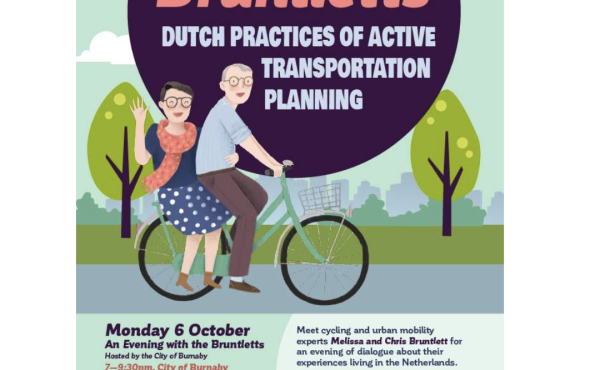

Author: Paul Lukez (Princeton Architectural Press, 2007)
The suburbs make up the vast majority of North America’s built landscape. Their creation coincided with the technological breakthroughs that revolutionized humanity’s capacity to swiftly destroy and construct environments.
Now, as the detrimental implications of this phenomenal endeavour become more known, we are left with the difficult question as to what the future holds for this pattern of dwelling. Many argue cynically that the suburbs have no future – stating that their painful decline is imminent. Others state that they are one of the great achievements of our civilization and that the preference for lower density living is inherent to our culture. As such, their demise is not likely.
Yet despite the passionate discussion, few have truly attempted to engage how the suburbs can grow and develop in a meaningful way in order to meet the many challenges that lie ahead. This question forms the basis of Paul Lukez’s Suburban Transformations. In the words of the author:
“This is a book for anyone who cares about the quality of their physical environment – particularly suburban and edge city sites – and wishes to see it improved, whether on the scale of the building, community, or region.”
The magnificent identities of our great cities of past, Lukez argues, developed as a result of the rich layering of transformations that developed over time and in response to circumstance – a process that contemporary suburban development does not allow. To this end, he explores how even the most generic suburb can evolve to gain a meaningful identity through transformations in response to the particulars of place through what he calls the ‘Adaptive Design Process’.
The book begins with a description of the development of “identity” – how it was inherent to successful cities of the past, how and why suburbs lack identity, and its alternatives. This lays the foundation for his argument that time must be taken into account throughout the design process – since only over time can one find the “right fit” between place and use. This ultimately forms the theoretical backbone of the Adaptive Design Process.
Lukez then posits that Identity = Site + Time, illustrating how the processes of “reading” a site (through mapping), “erasing” (selective and intelligent destruction) and “writing” (deliberate and calculated design and construction) work to create the identity of a place. Richly illustrated, this section focuses primarily on “erasing” and “writing,” organizing each by type and describing each type with a number of wonderful and clear depictions. This section also introduces the importance of infrastructure as an armature for the transformations described above and how it can – and should – play a key role in the creation of identity.
After clearly laying this strong base, Lukez delves into the Adaptive Design Process itself – described only in passing until this time. This is interconnected with the “reading” process touched upon earlier and focuses on mapping as a means of organizing and documenting a vast array of complex information. The Adaptive Design Process is then broken down into six distinct phases:
- Mapping – the process of organizing and representing complex information
- Editing – evaluating and filtering the results of the mapping process to attain the most important and relevant information that can be used towards design proposals.
- Selecting Design Tools and Typologies -consists of choosing appropriate building types, spatial models and conceptual frameworks that can translate the data gathered into coherent design proposals.
- Projecting – involves working with a community to anticipate future needs and develope a strategic vision with corresponding tactical actions.
- Simulating – requires the development of a series of design transformations, over multiple frames, depicting how the changes will occur over – from existing conditions towards the strategic vision
- Recalibrating – accommodating change in light of unforeseen changes and circumstances.
These phases are then fully and thoroughly demonstrated in the context of Burlington, Massachusetts – a non-descript and typical edge city north of Boston. Occupying the majority of the book, this exercise is filled with a vast array of interesting maps, diagrams and images clearly showing how the theory put forth can be put into practice.
The book ends with five case studies (Burlington – Massachusetts, Amsterdam – Netherlands, Dedham – Massachusetts, Shenzhen – China, and Revere Beach – Massachusetts) showing a condensed version of proposals developed using the Adaptive Design Process.
As a whole, Suburban Transformations is a strong book. Although it leans towards the conceptual, its focus on mapping real conditions and using them towards the development of meaningful design proposals that give identity to ‘placeless’ locations gives it a grounding uncommon to such books. The processes described and tools given are clear and readily accessible to all those who read it.
That said, there are a few weaker aspects to the book. Given that it is so image-heavy, several of the time-series maps included are too small. Since the changes described between these map are subtle, their size makes it difficult to track the transformations. Conversely, some maps are overly big – taking up a full page – for the limited information they are conveying. Striking a better balance between the information and graphics would have made the book easier to follow and better overall.
Similarly, the design and sequencing of the text and graphics – in the Burlington case study section, in particular – made following the descriptions and tying them to the images very difficult. I found myself getting lost frequently and wondering if the images I was looking at corresponded to the text I was reading or the text on the previous pages.
Also, although the images of the design proposals were provocative they are all quite similar – following the large-scale, multi-level mega-project constructions that hark back to the Team X proposals of the 1950’s…albeit a “greener” version. Although one can question whether this was a purposeful act or not, showing how the process could work at a variety of scales – small-scale incremental developments to large-scale constructs – would have strengthened the authors argument and made it more applicable to a wider range of conditions that currently characterize our suburbs.
Last, the great information looking at the types of “erasing” and “writing” early in the book, got lost in the later chapters. Arguably one of the most interesting and informative aspects of this book, how these types applied directly to the design proposals in the case studies could – and should – have been much stronger, as it would have tied the content of the book together more fully.
Looking at the book in its entirety, however, its positive aspects far outweigh its negative attributes. Suburban Transformations follows through on giving its readers a means of finding and enhancing the particular aspects that make our suburbs unique and showing us how they can be used to create places with meaningful identities. All those interested in what the future can hold for our edge cities, or who want to contribute to their transformation, should read this book.
***
Erick Villagomez is the Editor-in-chief at Spacing Vancouver. He is also an educator, independent researcher and designer with personal and professional interests in the urban landscapes. His private practice – Metis Design|Build – is an innovative practice dedicated to a collaborative and ecologically responsible approach to the design and construction of places. You can also see some of his drawing and digital painting adventures at Visual Thoughts.


